Discovering ... Bette Howland
in which I'm begging someone to put "The Old Wheeze" on a syllabus
“Why tell people anything? Why not tell them the truth? It seemed so much simpler.” Bette Howland wrote that in W-3, her memoir about her time in Ward 3, the psychiatric wing of a Chicago hospital where she was admitted after she’d swallowed a bottle of pills at her pal Saul Bellow’s apartment.
Bette’s mother was worried about “the public opinion” — “What would people think? What would people say?” — and Bette was, well, over it.
“All I knew was this: I couldn’t take it anymore, no longer could bear this burden of concealment. Things seemed bad enough without adding extra weight. I wanted to be rid of it all, all of it.”
I love that line: “Things seemed bad enough without adding extra weight.” And yet: W-3 isn’t even my favorite of what I’ve read — so far! —of Bette Howland’s work. I suspect I’ll have to return to it again and reassess. Consider Yiyun Li’s take:
“Bette Howland wrote a book that I thought was impossible to write. Less personal than a conventional memoir—Howland herself occupies minimal space—it can be read as an encyclopedia of life in a psychiatric ward, written from within a mental turmoil yet with preternatural omniscience.”
It makes sense, doesn’t it, that a woman who “wanted to be rid of it all, all of it” would choose to occupy minimal space in her own memoir. All this said: let’s back up a minute. Why had I, a reasonably well-read person with a literature degree, raised by an English teacher mother, never heard of Bette Howland?
One Day a MacArthur Genius, The Next, Vanished
We’ve already established that Bette was friends with Saul Bellow. You know, Nobel Prize winning, Pulitzer Prize winning, writer of Humboldt’s Gift, Saul Bellow. But, putting that aside, W-3 was Bette’s first book, published in 1974. She then went on to publish Blue in Chicago and Things to Come and Go, and by 1984, she had won a MacArthur Genius Fellowship! And yet.
“On June 2nd, 2015, Brigid Hughes, editor of the Brooklyn-based literary magazine, A Public Space, was browsing through the cart of books priced $1.00, the cast-offs, at Manhattan’s Housing Works Bookstore, when a book caught her eye. She didn’t recognize the author, but she picked it up with a few other books and went home and started reading it.”
That book was W-3. “It’s a safe bet that if Hughes, who prior to starting A Public Space in 2006 edited The Paris Review after George Plimpton’s death, hadn’t heard of Howland, then those in-the-know in the literary world haven’t either,” A.N. Devers writes. (So, it wasn’t just me.)
From there, Hughes took off looking for Bette, and called in reinforcements as well through Laura Preston, A Public Space’s assistant editor. Thanks to their efforts, they were able to connect with one of Bette’s sons, and ultimately published a portfolio of her work in A Public Space, which included letters from — you guessed it — Saul Bellow.
My Discovery
As for me, I initially “discovered” Bette in one of my favorite ways — browsing around a bookstore (while also eavesdropping on conversations, obviously). This cover spoke to me:
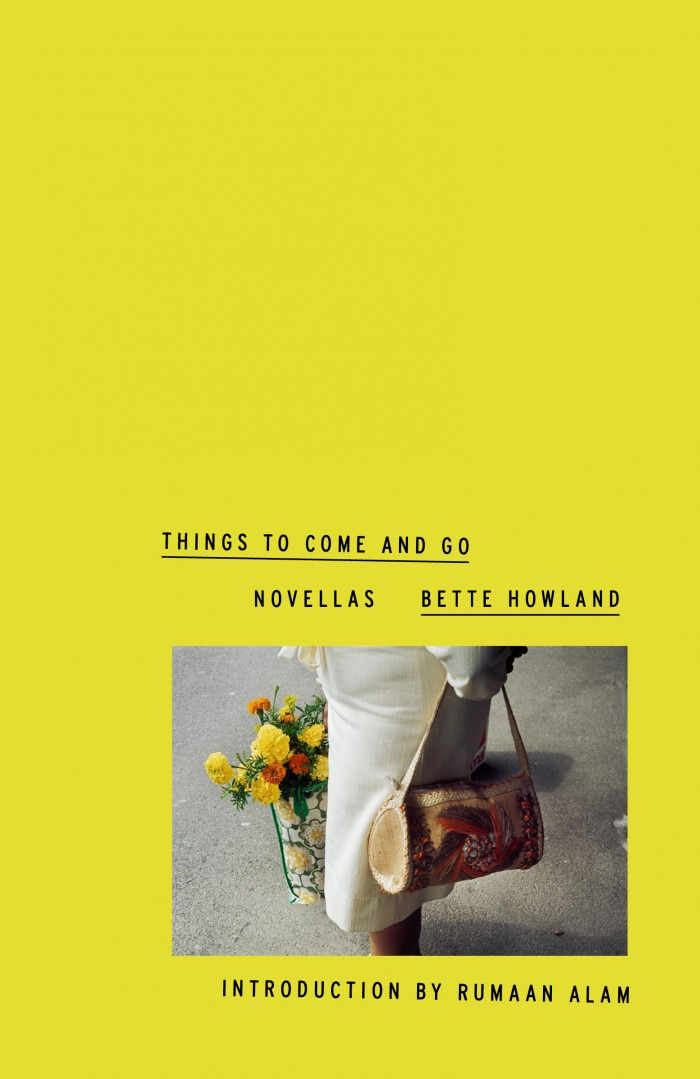
On the back cover, it reads: “Things to Come and Go showcases the incomparable talent of Bette Howland in novellas about three women that explore how urgently we wish to belong and how deep the sacrifice becomes of being true to ourselves.”
I then flipped to Rumaan Alam’s introduction, where I read: “Bette Howland was born in 1937. In Chicago, as is clear if you even glance at her work.”
Considering I was standing in a downtown Chicago bookstore (Exile in Bookville! Go there!), and I’m a sucker for a good novella, why wouldn’t I want to read three of them? Plus, I was pretty fascinated to see what the woman who took a bottle of sleeping pills while staying in Saul Bellow’s apartment had to say, to write.
My favorite: “The Old Wheeze” — god damn! That is a story. Cut Hemingway off the syllabus next semester, I beg you! Let’s read about Mrs. LaVonne Cheatham and talk about her instead! Like Rumaan Alam, I too “would read three hundred further pages of it: the stoic babysitter, the young divorcee, her brawny suitor…”
Here’s a glimpse into the mind of “the stoic babysitter,” Mrs. LaVonne Cheatham:
“He was a fine-looking man, and about as big as they come … And the way he laughed at his jokes. Had to, most likely; or else how was anyone to know that he meant to be funny?
Well, let him. Men, men—they had to be humored. She ought to know. Her father had been a man, and so had Mr. Cheatham.”
I loved “The Old Wheeze” so much. You can call it a short story if novella irks you. Whatever. It’s 42 pages. Do with that what you will, but mostly I urge you to read it.
Having read Things to Come and Go and W-3, I’m now working my way through the stories in Calm Sea and Prosperous Voyage (when I’m not reading my daily chapter of War & Peace, of course! ha!). Bette knew how to write an opener, that much is certain. Here come the opening lines of “Public Facilities,” as one example:
“The most popular volume in the branch library was the medical dictionary. You had to ask. It was kept under lock and key in a glass case. Customers coughed behind their hands, trying not to look worried about their health. As if their troubles weren’t plain enough. Watery sores, hoarse whispers, swollen legs, mackerel skins. One woman who kept coming in all winter long had something the matter with her nose. A hole in it; it was being eaten away.”
If I were texting you this, I’d now send you the head-exploding emoji. Come on!
Of course, all this is what led to my deep dive on the literary internet (bless you, Literary Hub!), where I learned about Brigid Hughes and Laura Preston’s true discovery of Bette.
I promptly ordered the A Public Space issue with her portfolio and the letters and postcards from ol’ Saul, which I find especially delightful considering they’re addressed to her at his address in Hyde Park. Here’s a little sneak peek of them:
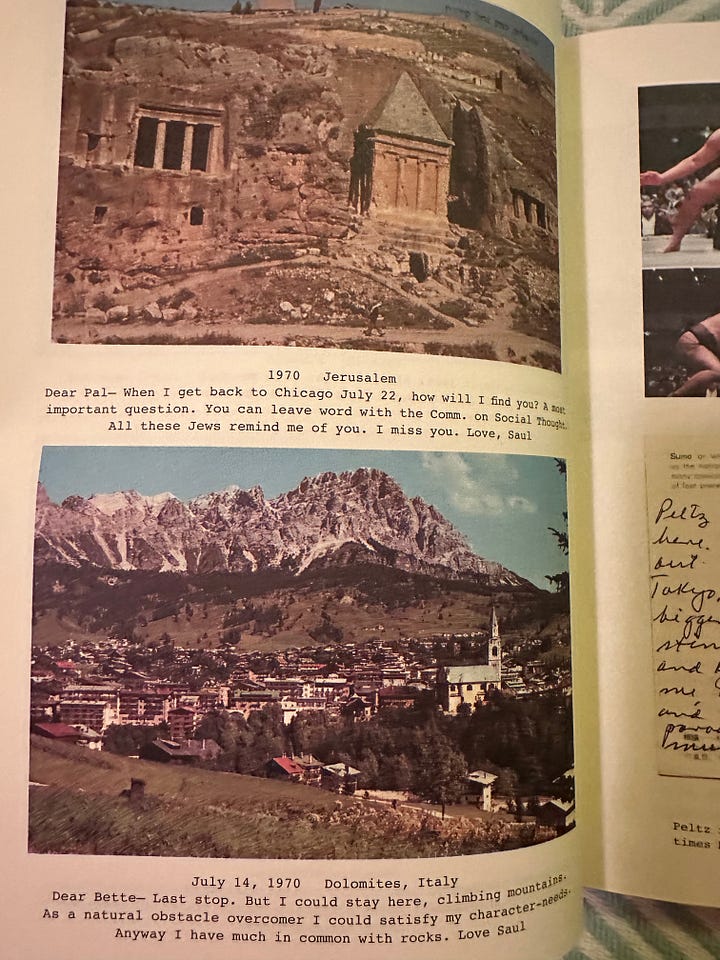
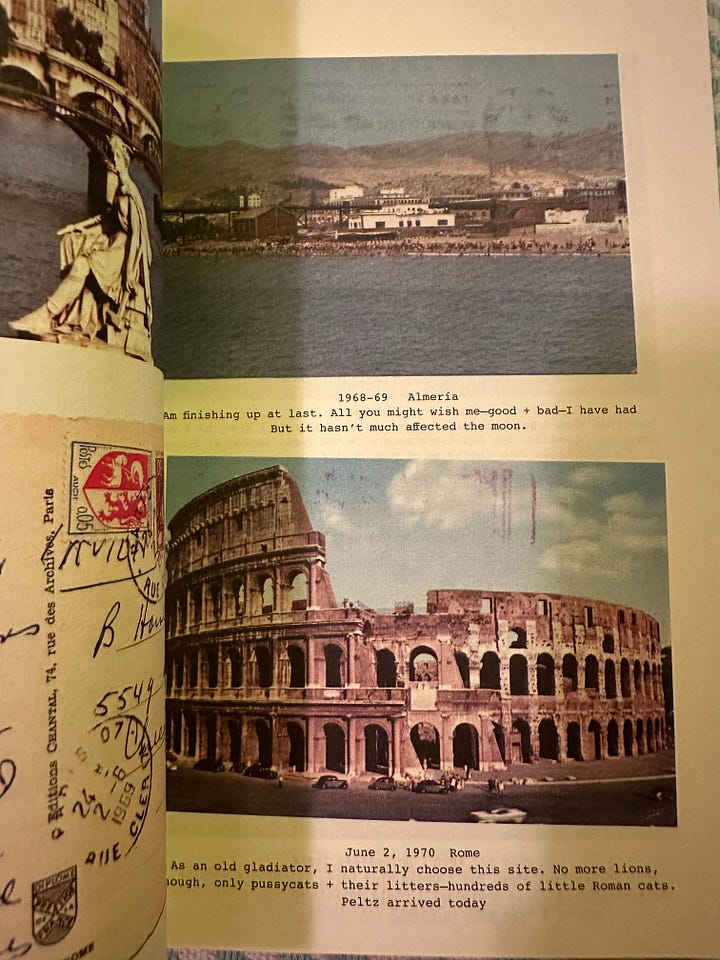
If we’ve learned anything from all of this, I hope it’s that 1) browsing the $1 book cart is always an excellent use of time and 2) sometimes going down a rabbit hole on the Internet can be, too. But mostly: let’s read Bette Howland.
“So here I am at last. This is it; this is what it’s like; I finally made it. Not just what I expected though. Hard to say just what that was.”
— Bette Howland, “The Life You Gave Me,” Things Come and Go
related:
Read the full story on Brigid Hughes’ discovery of Bette Howland over at Literary Hub.
And a reminder that I started drafting this in February!
to be sorted later #7
Did you miss me? I realized this evening that it’s been more than a month since the last “to be sorted later” edition! Whatever have you been reading in my absence? War & Peace? No? Is that just the Hamm family? Reminder: I’m doing a slow read of W&P

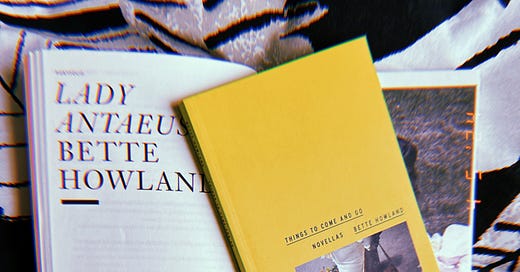



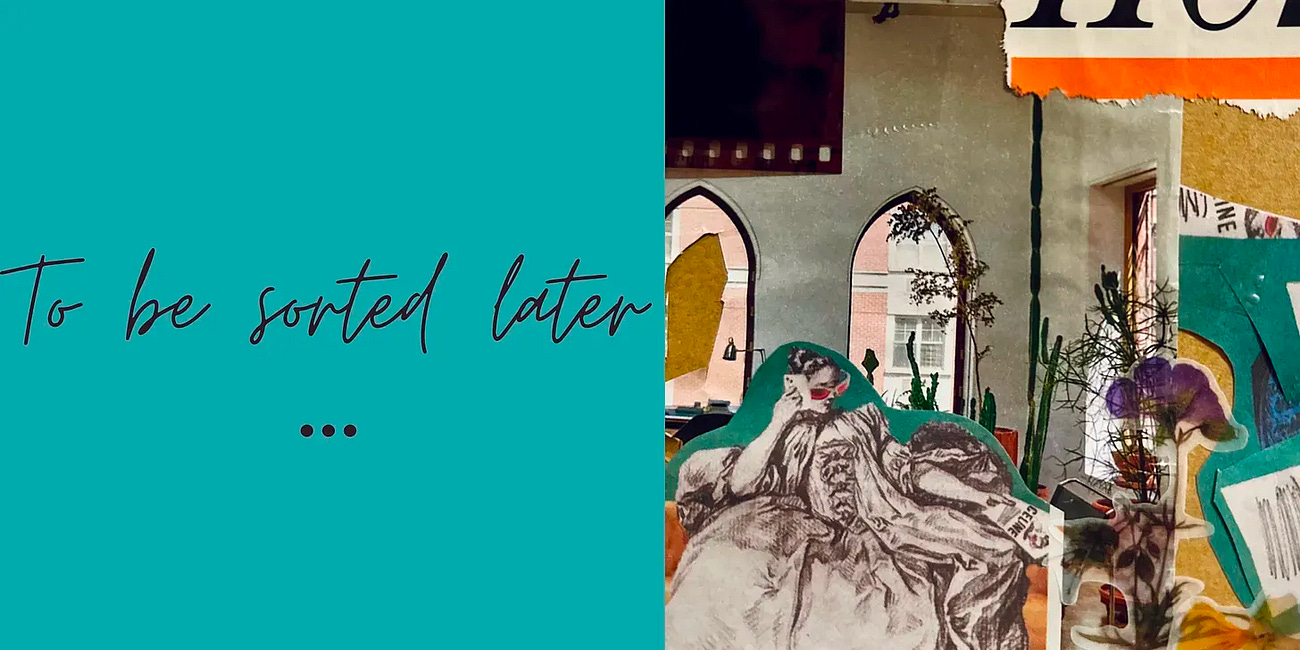
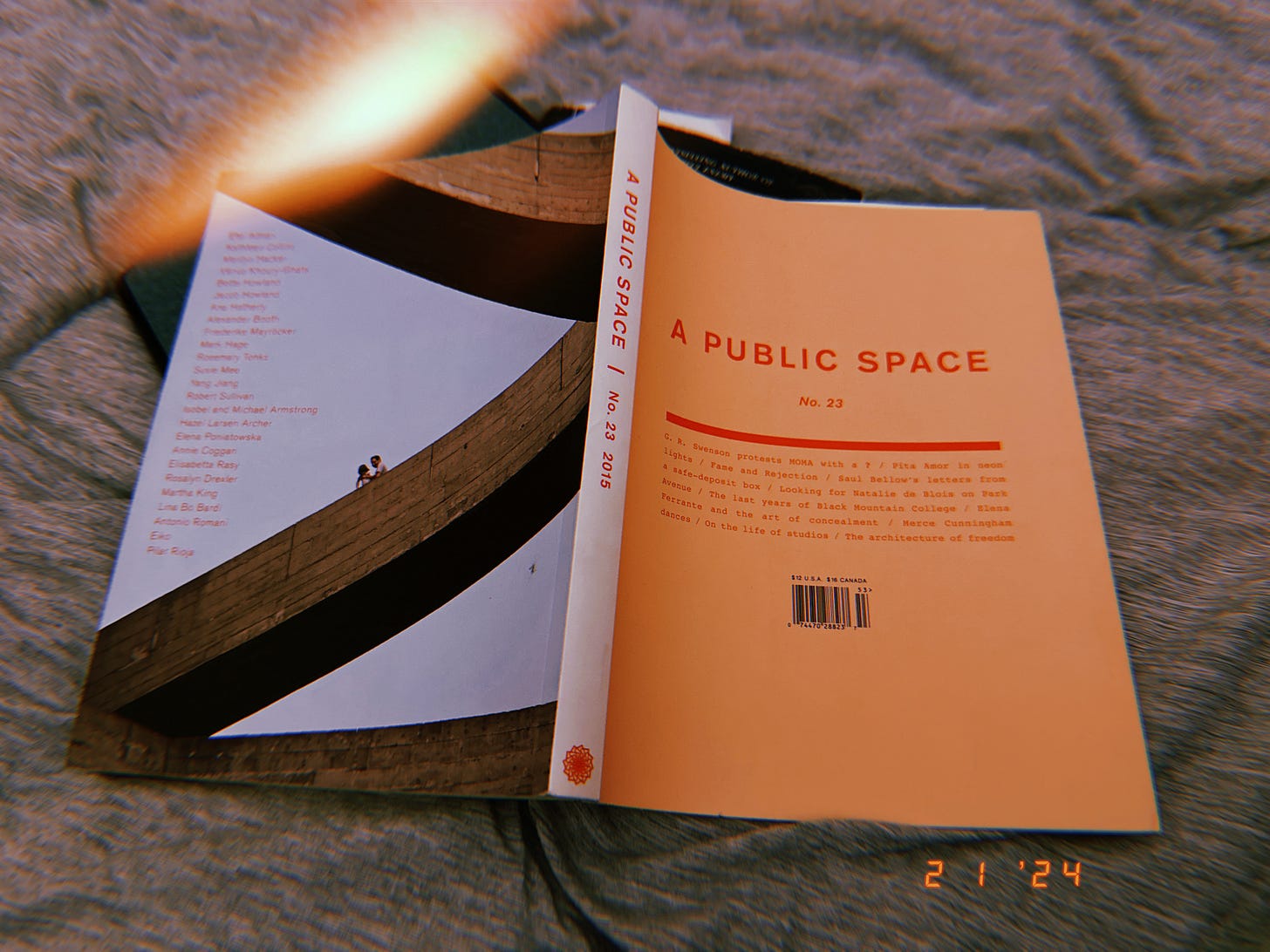
I'll be putting Bette on my list - Novellas! Lovers! Postcards! Oh my!